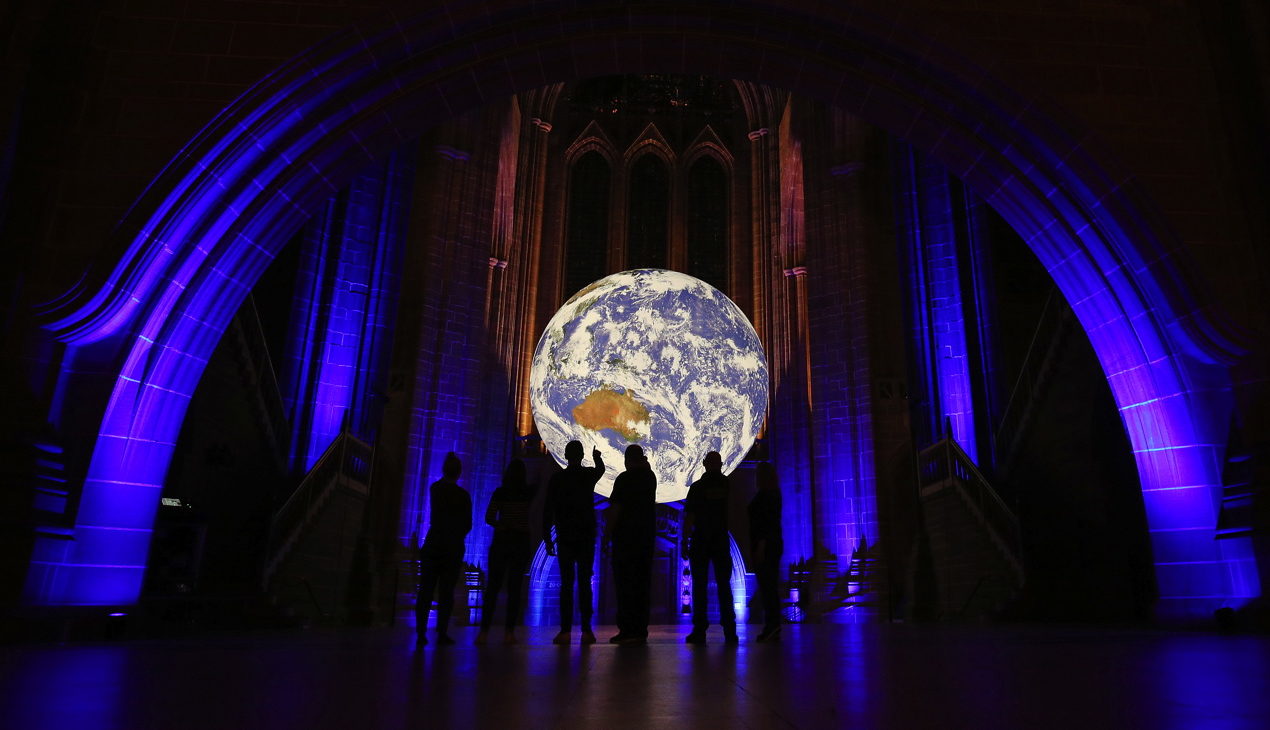Come down to Earth
To mark the fiftieth anniversary of the Moon landing there’s a whole programme of space themed events happening over the summer holidays
Luke Jerram is sat in his Bristol studio surrounded by huge panels of canoe-shaped fabric of blue, white and green. They’ve been made at a nearby hot air balloon manufacturers on a printer the size of a caravan, but Jerram isn’t planning to set
off around the world – he’s making it.
Jerram’s latest artwork, Gaia, is a three-dimensional illuminated artwork of Earth with detailed NASA imagery of the Earth’s surface and measuring seven metres in diameter. The artist is preparing to take it to Bradford where it will be suspended in the entrance foyer of the National Science and Media Museum as part of the upcoming exhibition Hello Universe.
“It’s basically a balloon, internally lit and printed on the outside. There’s a motor on the top that makes it spin, once every four minutes. It will probably take four or five people a full day to install it,” explains Jerram, “It’s going to be a bit of a squeeze but we’ve drawn up technical diagrams and a technical team on site will be making sure they’re happy with it and they’ve installed a hanging point as well.”
If bringing the Earth to Bradford sounds like a daunting task it doesn’t phase Jerram, who made his name by hefting pianos onto high streets for the public to play and whose Museum of the Moon artwork – the same concept as Gaia – has been seen by four million people at over 100 presentations in 30 different countries.
“I’ve got about 10 Moons touring the world simultaneously and I’ve got about five Earths as well,” he says. “The moon has been amazingly successful. When people walk into a darkened space and see it they say: ’Wow, amazing, how did you get it in here? Is it made of concrete? Is it made of fibreglass?’ So there’s an optical illusion that’s created – it looks like it has that solidity and texture. A little girl came up to me recently and said will you put the Moon back afterwards?”
Gaia is a more recent artwork, and despite the Bradford exhibition being about the universe beyond our own planet, it makes sense that on the 50th anniversary of the Moon landing it’s Jerram’s Earth and not his moon that first greets visitors. Gaia is said to create a sense of the Overview Effect, first described by author Frank White in 1987, to describe the feeling of awe astronauts experience when seeing Earth from space. According to White, the effect imparts a profound understanding of the interconnection of all life, and a renewed sense of responsibility for taking care of the environment.
“I think seeing Gaia is a very similar experience to seeing the Museum of the Moon – standing looking at the big circular sculpture emanating light,” says Jerram. “At the same time there’s a very different interpretation. It prompts people to think about the environmental impact that we’re having on the planet, people think about their own lives and it gives them a sense of perspective.”
Elsewhere in the Hello Universe exhibition visitors will be able to get up close to a meteorite, view a 1:2 scale model of a Mars Lander and take part in a wide range of free family activities such as building a probe, rover or rocket from Lego.
Judging by the response to Jerram’s artworks though – it will be the Earth’s gravitational pull that draws in the visitors.
“We put the artwork up in Liverpool cathedral for a month and it had 200,000 visitors,” says Jerram. “We had one person on Twitter say it’s very basic really – it’s just a printed globe with a light inside but for some reason I’ve been back to see it four times.”
Hello Universe: An Interactive Journey Through the Sights and Sounds of Space is at the National Science and Media Museum until 22 January with Gaia on display until 1 Sept (scienceandmediamuseum.org.uk). For tour dates of both
Gaia and the Museum of the Moon visit lukejerram.com

Leave a reply
Your email address will not be published.